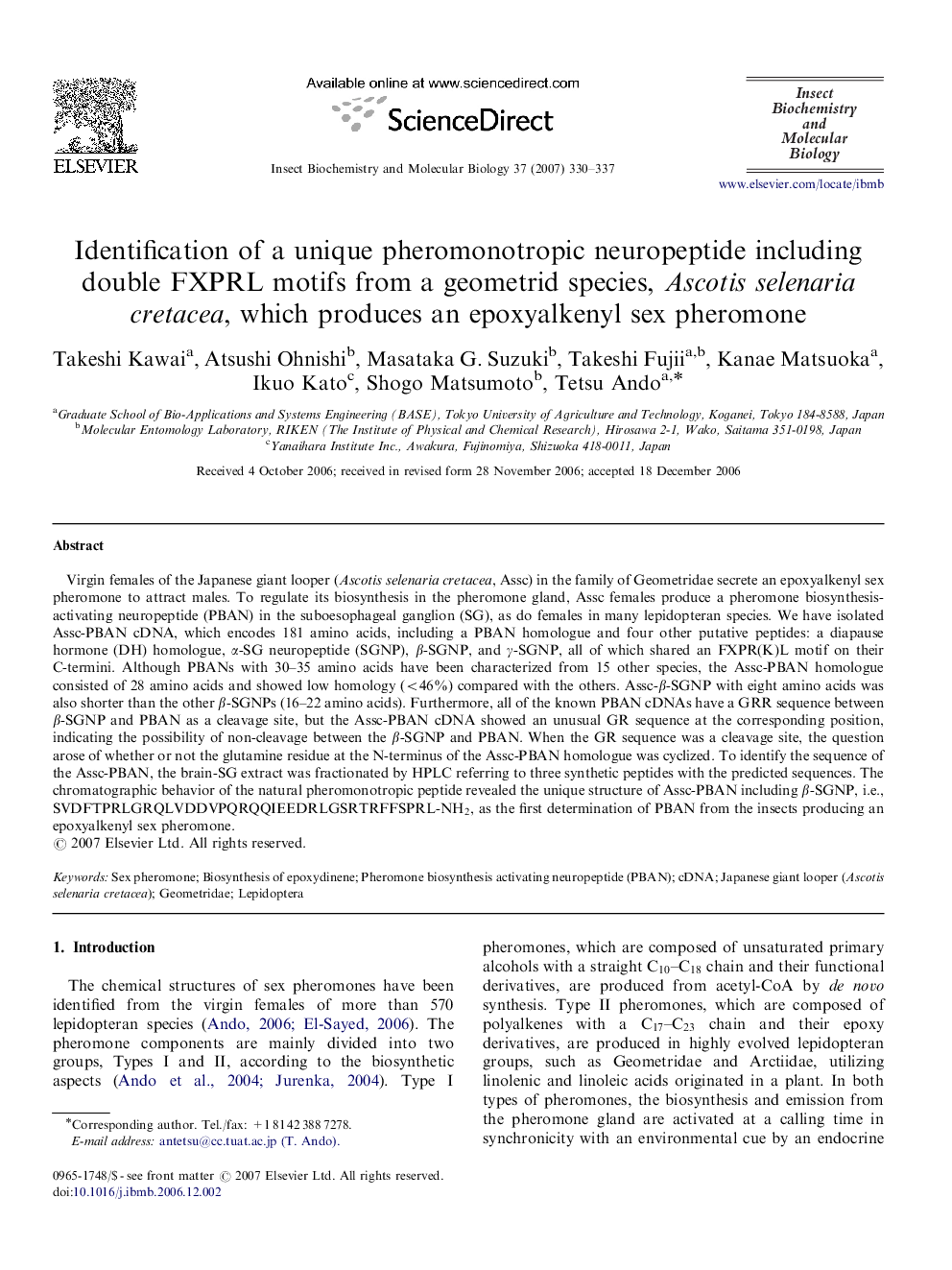| Article ID | Journal | Published Year | Pages | File Type |
|---|---|---|---|---|
| 1983035 | Insect Biochemistry and Molecular Biology | 2007 | 8 Pages |
Virgin females of the Japanese giant looper (Ascotis selenaria cretacea , Assc) in the family of Geometridae secrete an epoxyalkenyl sex pheromone to attract males. To regulate its biosynthesis in the pheromone gland, Assc females produce a pheromone biosynthesis-activating neuropeptide (PBAN) in the suboesophageal ganglion (SG), as do females in many lepidopteran species. We have isolated Assc-PBAN cDNA, which encodes 181 amino acids, including a PBAN homologue and four other putative peptides: a diapause hormone (DH) homologue, αα-SG neuropeptide (SGNP), ββ-SGNP, and γγ-SGNP, all of which shared an FXPR(K)L motif on their C-termini. Although PBANs with 30–35 amino acids have been characterized from 15 other species, the Assc-PBAN homologue consisted of 28 amino acids and showed low homology (<46%)(<46%) compared with the others. Assc-ββ-SGNP with eight amino acids was also shorter than the other ββ-SGNPs (16–22 amino acids). Furthermore, all of the known PBAN cDNAs have a GRR sequence between ββ-SGNP and PBAN as a cleavage site, but the Assc-PBAN cDNA showed an unusual GR sequence at the corresponding position, indicating the possibility of non-cleavage between the ββ-SGNP and PBAN. When the GR sequence was a cleavage site, the question arose of whether or not the glutamine residue at the N-terminus of the Assc-PBAN homologue was cyclized. To identify the sequence of the Assc-PBAN, the brain-SG extract was fractionated by HPLC referring to three synthetic peptides with the predicted sequences. The chromatographic behavior of the natural pheromonotropic peptide revealed the unique structure of Assc-PBAN including ββ-SGNP, i.e., SVDFTPRLGRQLVDDVPQRQQIEEDRLGSRTRFFSPRL-NH2NH2, as the first determination of PBAN from the insects producing an epoxyalkenyl sex pheromone.
